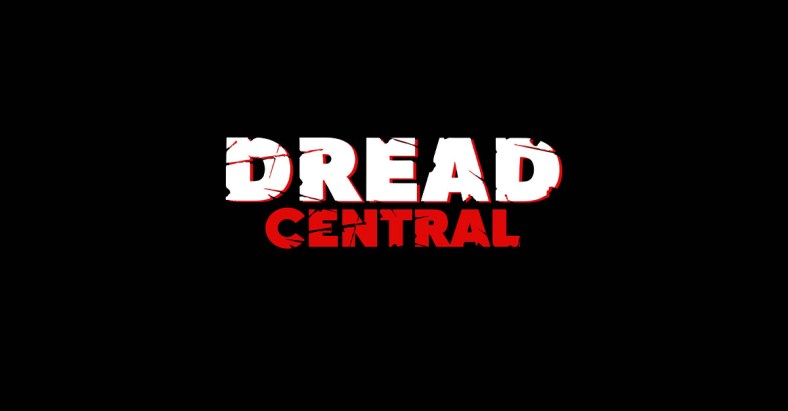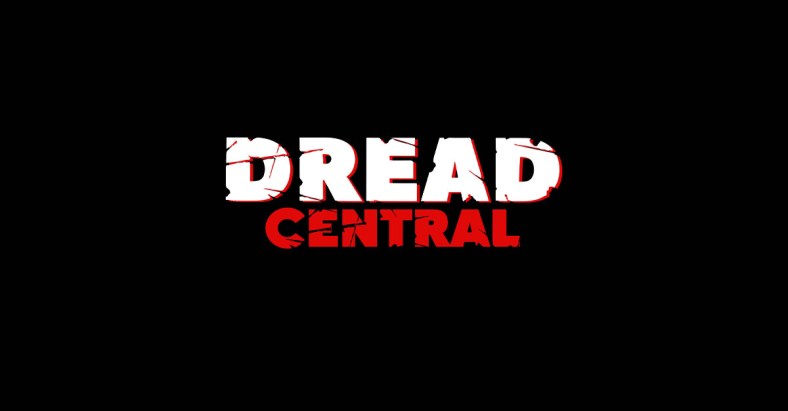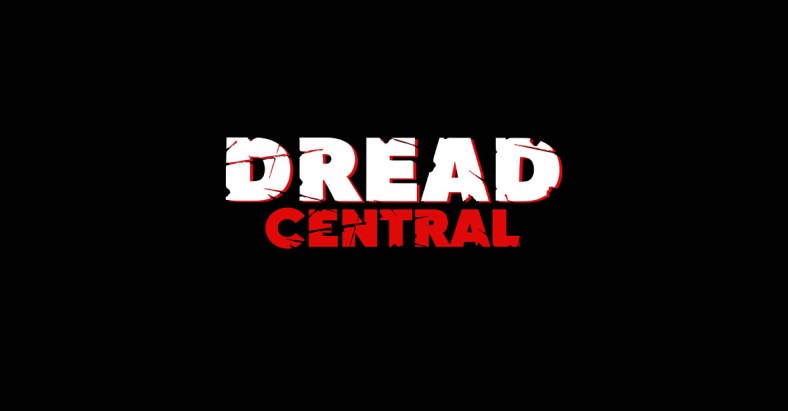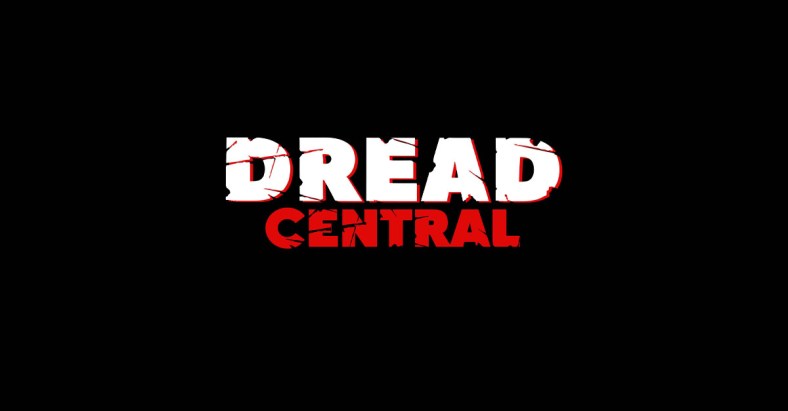Sitges 2016 Interview: Jeremy Gillespie, Steven Kostanski, Kathleen Munroe and Casey Walker Talk The Void

Cult indie directors Jeremy Gillespie and Steven Kostanski’s IndieGoGo campaign for their latest endeavour, The Void (Review), cajoled the internet last year when the Astron-6 collective duo set their sights much higher than all previous outings put together, promising a foreboding fusion of atmospheric dread and visceral (and VERY practical) creature effects:
“With this project we are pooling over ten years of experience to conjure up a terrifying film that will combine the aesthetic attitude of modern horror cinema as it emerged in the 1970s with the splatter and sophisticated practical special effects that ruled the creature features of the 1980s and early ’90s. But make no mistake, unlike Manborg and Father’s Day, this time we aren’t joking around. We are committed to introducing audiences to a unique horror-mythology.”
With a premise bringing to mind the cream of the creature feature crop, ranging from Toby Wilkins’ Splinter through to John Carpenter’s The Thing, The Void pits a lone police officer and a group of hospital staff against a mutating horde of rapacious parasitic creatures. The only problem is, once they’ve holed themselves up inside the hospital, they realize the real terror is actually already within those same walls.
With The Void having just wooed festivalgoers at this year’s Sitges – International Fantastic Film Festival of Catalonia, we sat down with directors/writers Gillespie and Kostanski, lead actress Kathleen Munroe and producer Casey Walker to quiz them about their decision to shed their parodic sensibilities and tackle what is by far their most ambitious project to date…

DREAD CENTRAL: Even though the film has only recently hit the festival circuit and the tone is quite a different flavor compared to your previous output, the premise for The Void dates back to around the same time as Manborg and Father’s Day.
Steven Kostanski: The idea started back in about 2011. We were just finishing up Father’s Day and we were at Fantastic Fest for the premiere of Manborg. We were at an industry lunch or something like that and we just wandered around there throwing ideas back and forth and that’s when Jeremy tossed this idea at me of being trapped in a hospital with some big monsters and we took it from there.
DC: The initial outline had me thinking of Masayuki Ochiai’s Infection. How much of an influence did J-horror play, if any?
 Jeremy Gillespie: I do know of that film, but I don’t think that I’ve actually seen it. I don’t really know where it all came from. It was very much an organic thing. The first image that came was the big pyramid image that we used a lot in the promotion of the movie (see right). It just all grew out of that. It was a handful of different ideas and things that we liked and that we just wanted to do.
Jeremy Gillespie: I do know of that film, but I don’t think that I’ve actually seen it. I don’t really know where it all came from. It was very much an organic thing. The first image that came was the big pyramid image that we used a lot in the promotion of the movie (see right). It just all grew out of that. It was a handful of different ideas and things that we liked and that we just wanted to do.
SK: Yeah, it was like a mishmash of all the things we thought would make for the best action/horror movie and it just spiralled out of that.
DC: With all the experience you’ve amassed in terms of special effects, when you wrote the script did you find yourselves super conscious of the effects side of things or did you do your utmost to try and blank that side of things out of your minds at first to focus on a solid story?
SK: In terms of the script, we were never really thinking what effects were achievable. It was more a case of, “This would be a cool thing. Let’s do that.” And then we’d throw it to the creature effects artist after and he’d go, “Well how the hell are we supposed to do that?” (laughs)
JG: But I think the creatures were always born out of the story. I personally didn’t consider any practicality at all. (laughs)
SK: No. And even though I work in practical effects, I didn’t have any consideration for it either because I figured the challenge would be half the fun of it. I mean, what’s the point of doing it if you’re going to limit yourself and not go for the craziest idea possible, right?
DC: Talking of which, Jeremy, you recently commented on how you felt a major problem with genre movies right now is that filmmakers never really take ambitious risks any more.
JG: Yeah. That’s a pretty generalized thing, but there are A LOT of movies that do do that. I just think that, on a grand scale, when you’re on Netflix or something and scrolling through all these horror movies, they all have the same cover because they’re all ghost movies or whatever. Everything seems to move in waves as everybody jumps on the same bandwagon. I say everybody but, of course, there are always some people doing some interesting things. I just think that filmmakers in general – not just in horror – should be taking risks because otherwise, what’s the point?
SK: I’m definitely not finding the same kind of variety that I used to find as a kid looking at the video store to pick up a movie to rent at the weekend. I would have Hellraiser on one shelf and Phantasm on the other so we had these polar opposite movies that were both totally insane in their own ways and I don’t really feel that with a lot of horror films now. There are people doing risky things but, as Jeremy just said, things do tend to move in waves, but I think this idea we had for The Void is…
JG: This is definitely NOT part of any wave.
SK: Yeah. This really isn’t the kind of thing we’re used to seeing these days.
DC: So taking all these risks must have meant you came across your fair share of road blocks.
JG: Oh yeah! EVERYTHING about this movie was a big struggle. I would say that casting was the one thing that worked out perfectly.
SK: The cast totally saves the movie. (laughs) But seriously though, having great actors, especially in a creature movie, elevates the rubber monsters and we really lucked out with the cast. They really lend the movie a legitimacy by selling the creatures.
JG: If anybody thinks the creatures work in this movie, it’s because of our actors, not because of the creatures.

DC: You say that but Kathleen, surely having all these rubber effigies on set must have, at least to a certain extent, helped your performance as it meant you didn’t have to interact with a piece of blue tape stuck to one side of the camera or whatever.
Kathleen Munroe: Yeah. Without wanting to turn this into a big wankfest, (laughs) it’s so easy when the creatures and effects are all there. First of all, the world that they’d built this story in was so clearly defined on the page and also in conversations I had with them. There was a clear vision and so, as long as we were all on board with that vision, it was really easy to operate. And then, seeing the creatures and the effects integrated into the space that we’re trying to tell the story in just takes our work and does it for us. We don’t have to use imagination to get over hurdles of putting things in after the fact in CGI and risking not imagining the right thing when we’re in the scenes. But at the same time, it was a really good story and the characters were all clearly defined and the relationships were all clearly defined and we were all excited to do this because we knew how skilled these guys are with the effects and the genre world that they’re in. It’s exciting to be in something that feels like it’s pushing the genre further. Also, I don’t think anybody came out of this project with any ego, as a performer, because we knew that it was so much about these unbelievable creatures that were built for The Void and then how to sustain the reality of what would actually happen if normal people were confronted by these insane, fucking crazy things. So it worked hand in hand I think.
DC: Jeremy and Steven, with you working as co-directors and co-writers, how do you operate as a team? Do you each have specific hats you each prefer to wear?
SK: A lot of The Void just came from hanging out and just talking through stuff.
JG: Yeah. There’s not really any magical process or anything. It’s really just us being in a room and sorting through it in terms of the writing. In terms of the directing, I think we had spent so long putting it together that we were so on the same page that it was pretty easy. We definitely have our own tastes about certain things and I think this movie is definitely an amalgamation of our tastes, but when we were on the ground shooting…
SK: It was more about survival. But we had to work together on everything so our visions became pretty clear and defined by that point because we didn’t have any other choice.
DC: Jeremy, most of Astron-6’s previous output was scored by you so I was surprised that wasn’t the case this time.
JG: I did actually do some of the music. I did originally want to do all the music for the movie but then with all the schedules, it just became impossible so we went through a very complicated process of getting the music done by different people. That’s not an ideal way to do it. I would NOT recommend that to anybody, but when you’re working at a certain level you just have to work to your strengths and problem solve. I think we had a very specific idea about how we wanted the music to be…
SK: And we had a lot of people who are good at different things. It was different styles in a movie that was already a kind of mishmash of a bunch of different things so it actually worked out very well having these different approaches. Yet, surprisingly, watching the film it all feels very much the same. It’s cohesive, for sure.
DC: Aside from working with different musicians, you also went with a DoP you’d never worked with before, Samy Inayeh.
SK: Yeah. Samy came highly recommended to us and he was just awesome. Again, he was another element that just elevated the movie above anything that we could do on our own.
JG: He had done some music video work that I knew and I just thought, “I don’t even believe we could get this guy! That’s ridiculous.” But then we did get him and he seemed to really connect with the material.
DC: With some of your musicians and the DoP having worked on The Vicious Brothers’ Extraterrestrial, I just assumed you were acquainted with them already.
SK: That was just a really weird coincidence. It was because Tristan Tarr from Blitz/Berlin adopted a dog from an organization that I also adopted a dog from so I met him through that organization because I briefly fostered the dog that he now has.
Casey Walker: They’re puppy pals.
SK: Exactly. So we’re dog buddies and he just said to me that he composed music and that he’d love to score one of our movies. So they came in when we were shopping around for composers and they did a temp track for us and we liked it so much that we ended up bringing them on board to do a bunch of stuff. They were great.

DC. I know you’ve still got a bunch of festivals coming up with The Void but I’m guessing you’re already scheming which direction to go next?
SK: Right now, to bed.
JG: Yeah. Going to bed and having a nice sleep.
SK: We’ve been living this movie for so long that it’d be nice to not be knee-deep in a movie.
DC: I’m not surprised. It amazes me how you find the time to work in design and FX for major Hollywood productions whilst making your own movies in whatever free time you may have.
JG: Again, it’s NOT an ideal way of doing things and I wouldn’t recommend it to anyone.
CW: No sleep. I would get messages from these guys at the weirdest hours.
SK: Yeah. It’s a lot of us doing 12 hour days on a big Hollywood show and then meeting up afterwards to work on the script for 2 hours. It was a lot of juggling too much at once.
JG: It’s the same for any movie at this kind of budget level or on this scale. It’s like a passion project. The only way you can do it is if you really want to get it done so you just have to push yourself through it all if you want to succeed.
Official Synopsis:
In the middle of a routine patrol, officer Daniel Carter happens upon a blood-soaked figure limping down a deserted stretch of road. He rushes the young man to a nearby rural hospital staffed by a skeleton crew, only to discover that patients and personnel are transforming into something inhuman. As the horror intensifies, Carter leads the other survivors on a hellish voyage into the subterranean depths of the hospital in a desperate bid to end the nightmare before it’s too late.


Categorized: Editorials
